Betelgeuse dim 2019 galactic causes
Betelgeuse dimming in December 2019
In October and especially December 2019, the star Betelgeuse began to noticeably lose brightness. A strange case that had never happened in the tens/hundreds of years of observation. At first it seemed to everyone, including me, that it would explode as a supernova. I knew it had to happen but it seemed too early. The maximum decrease in brightness occurred towards mid-January 2020 and reached M 1.9 when on average the minimum brightness of the star (it is a variable star) has always been 0.9. The ratio is approximately 2.5 times less bright. But then it slowly began to regain brightness until it became brighter than normal in 2023. An event of this kind in astronomy is very rare. Usually we talk about variable stars which however have a fixed and repetitive variation in brightness, furthermore here we are talking about a red giant star, towards the end of its existence and which has always been one of the main candidates to explode as a supernova.
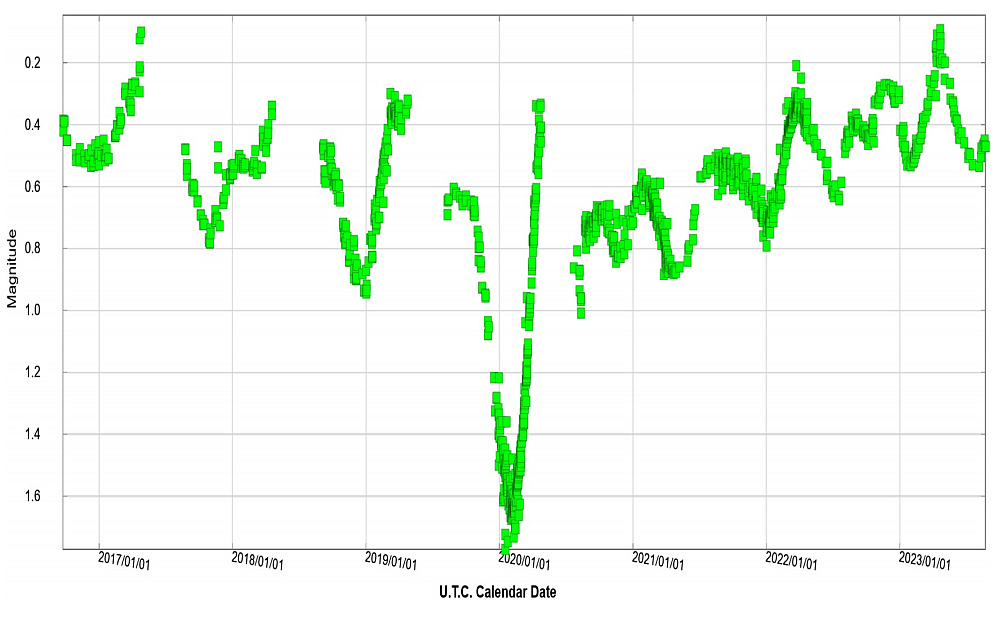
A – Graph of the decrease in brightness of Betelgeuse in 2019-2020. Note how it has regained its brightness, returning practically to normal in 2023.
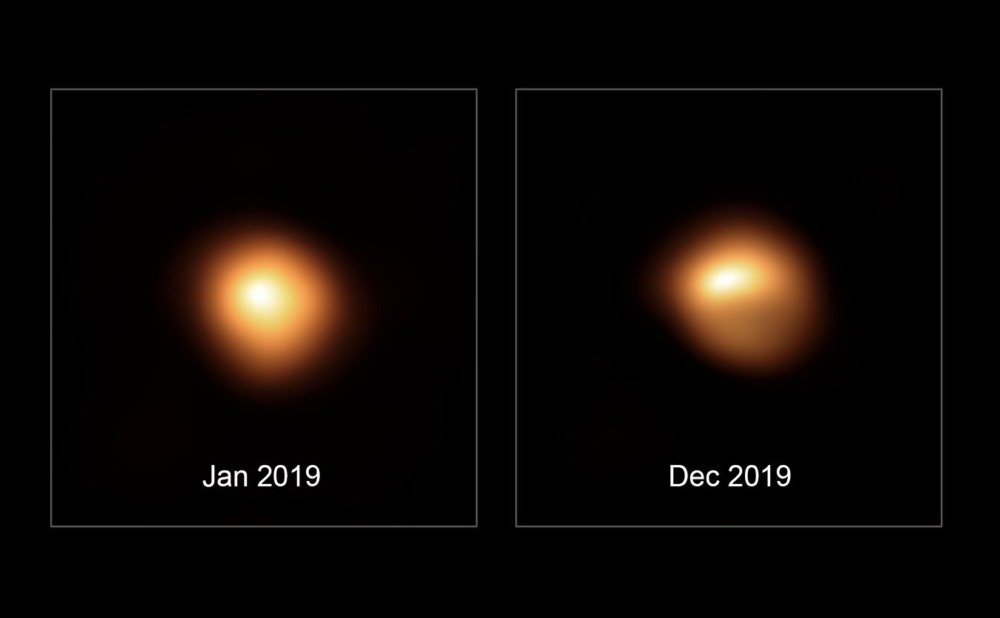
B – Photos highlighting the difference in the star’s brightness during the 2019 dip.
Published theories and hypotheses
The first hypothesis made by 2 astronomers and an amateur astronomer was that of the coincidence of the star's minima. In fact Betelgeuse has 2 periods of variation in brightness: one of 5.9 years and one of 425 days. Scientists hypothesized that the crossing of lows could have led to the drop in brightness.
However, newspapers around the world reported the probability that it would explode as a supernova. However, astronomers were more cautious because in their calculations, as I explained on the previous page, the star should have exploded in 100,000 years. The calculation would be correct if, however, there was no interference from any other supernova. However, it was an exceptional event and even I, who did not yet know the mechanism of how cosmic rays cross paths with each other, was convinced that perhaps even the explosion would happen.
Another hypothesized theory was that of a gigantic cloud, like an eruption, that came out of the star making it darker upon observation. It was eventually confirmed by several studies that the dip in brightness was caused by a cold cloud in the star's photosphere. The cloud had been generated by the star but, this is the hypothesis, it had cooled and had caused the decrease in brightness. Read below to know my point of view.
A new theory of Betelgeuse’s dimming
After about 2 months from the decrease in brightness I discovered thanks to the prayers made, certainly not me, that the stars are all connected to each other. Their magnetic fields and cosmic ray emission connects them. At this point, supernovae are generated by other supernovae under certain conditions: the arriving rays must be powerful enough and the star must be dying.
On the previous page, where I explained what I had discovered, to better understand how all the supernovae already studied intertwined with each other, I had made a list of all these stars with all the crossings of cosmic rays from one to the other. To evaluate the impact I had made an equation that gave me a value of the energy arriving and based on the longevity of the receiving star I could know the probability that it would become a supernova.
Of all the calculations I have done, only in 2 out of 80 have I found that the crossing of the rays and the subsequent explosion occurred (but for a more in-depth study of all the stars it takes months if not years. I will also explain this with the details in the coming months). As I wrote, they were SN1572 and SN1604 activated by SN1181 and SN393 respectively. At the other intersections there would probably have been other surprises. As soon as I have time I will continue these studies but now there are more important things. If you want, just contact me to request all the data.
However at this point I had to understand which star crossed its rays with Betelgeuse. I have to say it wasn't difficult at all. Once months the data in the trigonometric distance equation came out that it had been SN1572 at 100%. Below are the screenshots of the Excel spreadsheet on which I did the calculations and all the measurements found.
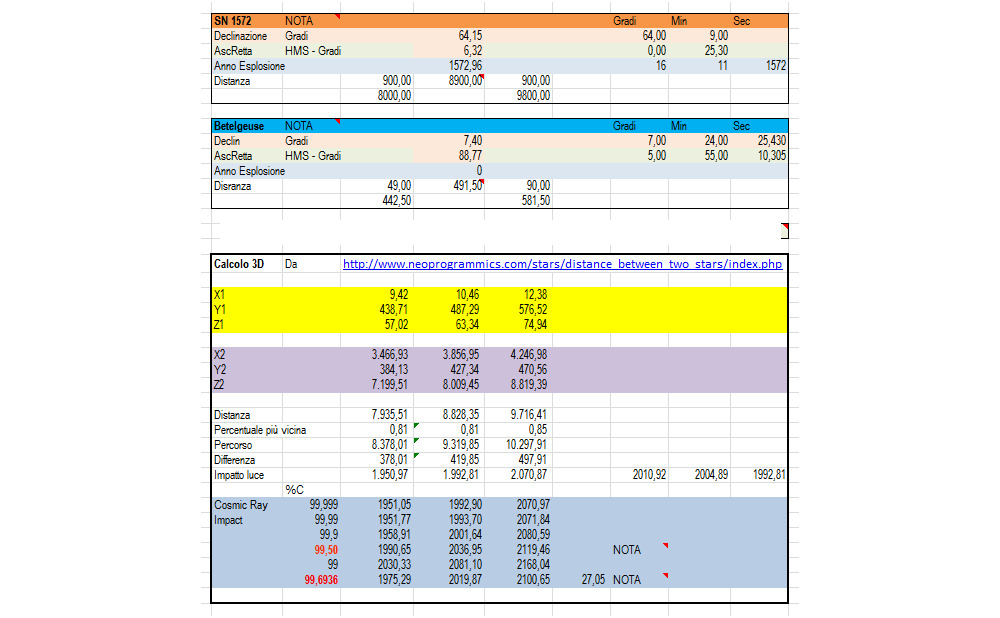
C – Calculation with Excel spreadsheet of the impact of cosmic rays between SN 1572 and Betelgeuse. Distances SN1572 8900 Al and Betelgeuse 491.5 Al.
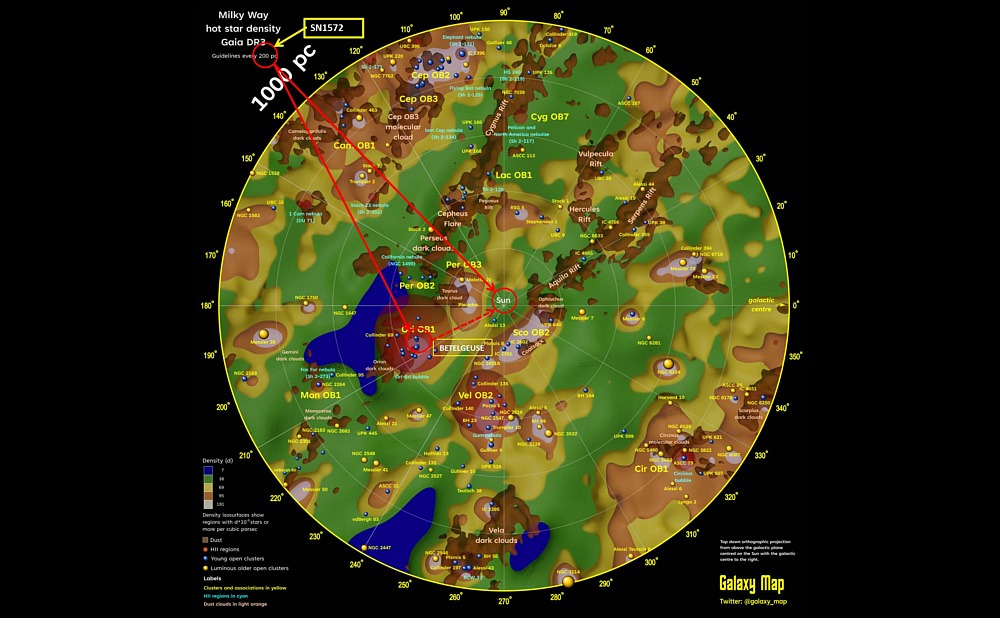
D – Triangulation (2D) of the positions in the Milky Way of SN1572, Betelgeuse and Earth. The rays of SN1572 arrived at Earth in 1572, the journey from Betelgeuse to Earth took another 420 years for light and 447 years for the more “powerful” cosmic rays.
In practice I took the data of the 2 stars (SN1572 and Betelgeuse) and placed them in two boxes. In the photo above, the orange one is from the progenitor star of cosmic rays and the blue one is from the star that receives them. Below the two boxes is the trigonometric calculation of the distance between the two stars knowing: the distance of both from the earth (this is a very delicate point) and the angular opening between the two stars seen from the earth.
In the box below there is the result of the calculation
X1-Z1 and X2-Z2 are the coordinates in Light Years of the stars. Then further down the actual distance between the two stars and the path towards the earth is automatically calculated since everything we see is always a function of the distances in AL. To understand better, it is a triangle where sometimes the earth is in front of both and sometimes in the middle. With some triangulations the dates go after the year 10 thousand and no longer make sense.
At this point several problems arise. The first is the distance to the stars. The distance to Betelgeuse given by astronomers over time varies from 1000 ly to 540 ly (be careful only recently having studied it in depth due to the dip it has decreased again to 407 ly). So by inserting these values into the Excel sheet you end up with dates that have nothing to do with 2019.
Furthermore, what we saw was the impact of cosmic rays and not light and obviously they arrive later.
At those distances “after” can be tens of years.
Then I understood that I had to experiment and first of all for cosmic rays I “aimed” at the most common ones reported on Wikipedia. In short, the rays have a relativistic kinetic energy (i.e. calculated with Einstein's relativity equations) which finds its maximum between flux and energy per particle.
Then I took the data of the major impact caused by SN1572 on the earth in 1600 (Huaynaputina volcano VEI 6 plus many earthquakes), I calculated the time difference between the light of the supernova in 16-Nov-1572 and the impact in February of 1600: a speed of 99.63% c (the latter, however, is variable due to the different densities of galactic space). Which is approximately exactly in line with the cosmic ray flow present in the Wikipedia table and which I report below.
So once I found the speed to “follow” for the cosmic rays I had to gradually calculate and test the distance to Betelgeuse until the rays crossed in December 2019. It didn't take long to finally find the “true” distance to Betelgeuse it was found to be 491.5 light years with a distance of SN1572 of 8900 AL. It should be noted that at the time the distance I had available, i.e. the last one calculated by astronomers, was 540 light years. Obviously at 540 light years it wouldn't have matched 2019.
But I had to make attempts and I took the distance I found with the new calculation for granted as “right”. Just as I am writing I read on Wikipedia that astronomers have adjusted this distance (very difficult to calculate) and brought it to 408 Al (+90 and -49) and the one calculated by me is an average of the last two.
But even such a “small” difference would lead those rays to impact Betelgeuse in 1949. But in 1949 nothing happened to Betelgeuse. So logically I have to take the distance calculated with the cosmic ray impact system as “correct”.
Another problem is the distance of the progenitor star, i.e. SN1572, which astronomers have calculated from 8000 ly to 9800 ly.
But I noticed that, being very distant, the result does not vary much. In these cases Betelgeuse should be 485 light years away. While in the previous calculation they were 491 ly.
In the end I can sum up the data from the calculation of the crossing of cosmic rays of SN 1572 with Betelgeuse correspond to 100% and therefore I can say with certainty that the drop in brightness of the star in 2019-2020 was caused precisely by cosmic rays. Surely all my calculations can be rechecked more precisely, for those who want there is an Excel sheet available.
The distance to SN1572 (Cas A) recalculated
The distance of the supernova SN 1572 (Remnant Cassiopeia A) is very important, not so much for this page dedicated to Betelgeuse, but for the next one in which I will talk about Antares. Wikipedia reports a Cas A distance of 3.4 Kpc (11,000 ly) taking as reference this study done in 2006 by various scientists. On the page dedicated to the progenitor supernova, SN1572, there is talk of a minimum of 8000 AL and a maximum of 9600 ly, this is the relevant study and it is more recent, from 2010.
It is very difficult to calculate the distance because the nebula does not have a well-defined shape and the center is not well known to be able to calculate the expansion well. To calculate the distance there are 2 parameters: the first is the exact size of the nebula and the second the expansion speed. So the results are very approximate. So much so that in another study a distance between 6500 and 16300 ly was calculated.
From the brightness curve it can be seen that the supernova is type Ia. Conjectures about the distance were also made based on this. From experience with these studies I have noticed that all the distances of the stars have always been calculated much further away. For example, Betelgeuse has always been given 600 ly, until it was brought to 540 ly years ago and in recent times, after the decrease in brightness in 2019, they calculated 408 ly.
In this paper (Astro H) serious arguments are put into doubt that supernova SN1672 is Type Ia. The main issue is the emissions of Chromium Manganese and Iron which characterize the supernova as Type Ia. The complete lack of manganese in SN1572 makes us assume that the supernova is of another type. Furthermore, unlike other types of type Ia supernovae such as SN1054, the remnant Crab Nebula, the figure of the nebula appears almost devoid of filaments. At this point it is easy to assume that, although the luminosity curve is similar to that of Type Ia (but be careful, the curve was reconstructed based on indications made by astronomers in 1500 who had no instruments), that SN 1572 is not type Ia or but a subtype or even Type II. In fact, it is difficult to find the remaining companion star.
Type Ia supernova is the most powerful, now given that the curve is similar to the other two types Ib and Ic and the other two types have similar brightness, it is very likely that SN1572 is not Type Ia but one of the other 2 below Fig – A. At this point we need to re-evaluate the distance. Since the absolute brightness has decreased, then the brightness must also decrease correspondingly.
So starting from the last calculation where I had written 8900 ly (+900 -900) and knowing that the absolute brightness has decreased by 2.5 Mag. therefore the distance goes from 3200 AL to 3920 ly. I will keep these calculations on the next page. Below are the graphs and explanatory images.
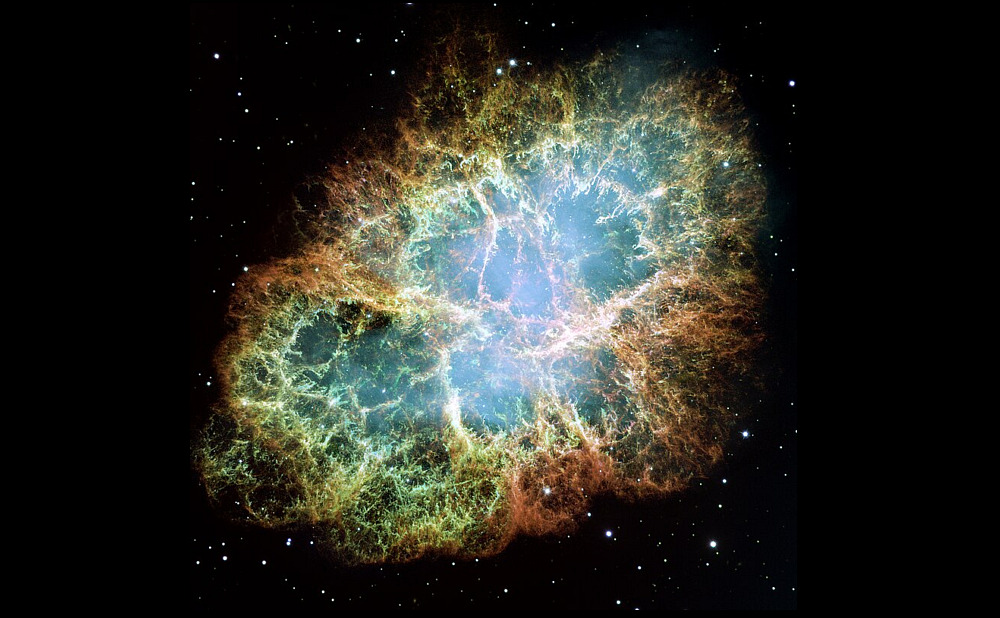
E – Crab Nebula. Remnant of the Type Ia supernova SN1054. Note the filaments.
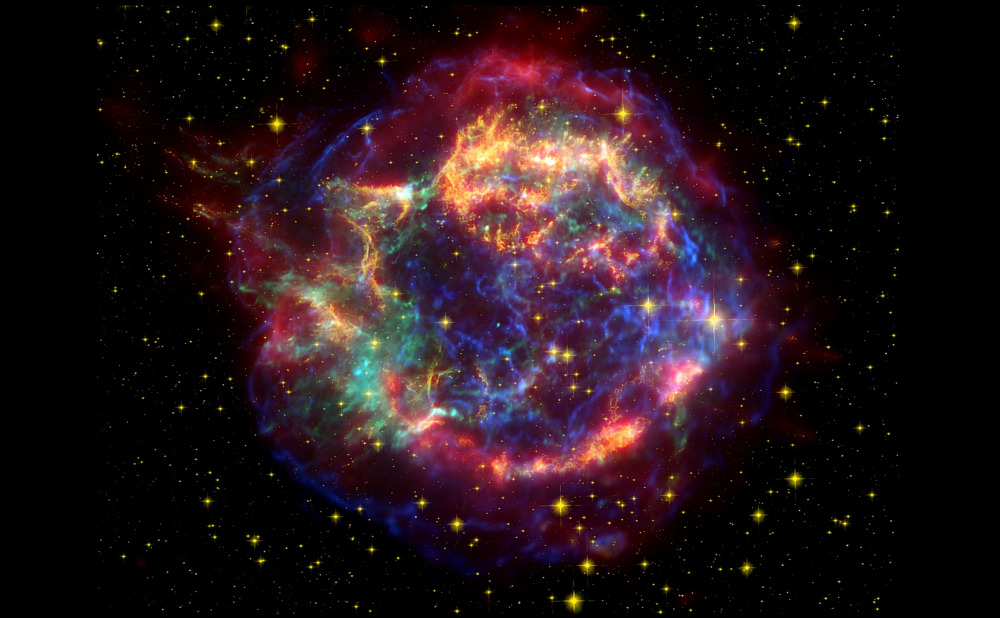
F – Cas A Nebula (Cassiopeia A). Remnant of supernova SN 1572. Note the lack of filaments in the nebula. It is very likely that the two supernovae are not of the same type.
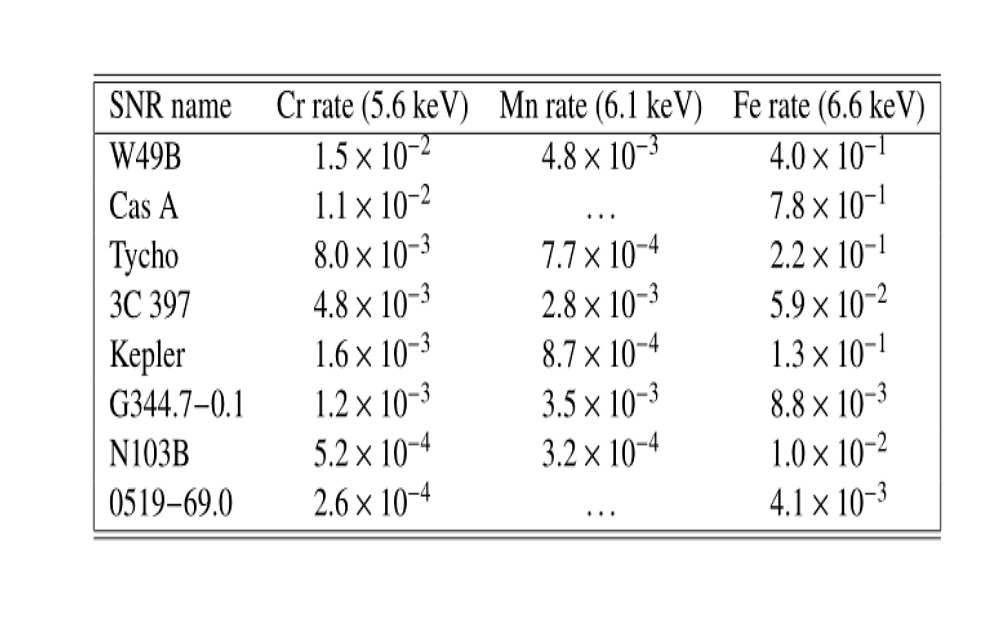
G – Various measurements made via ASTRO H (Japanese Satellite) of supernova remnants Type I known. Note how “Cas A” differs from the others due to the lack of Mn (Manganese).
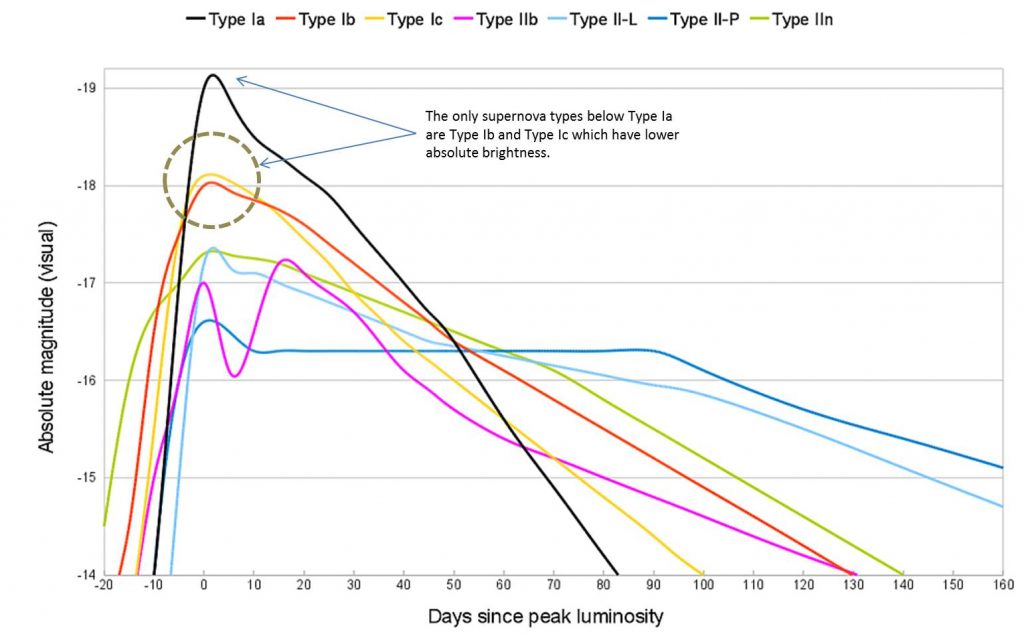
D – Brightness curves of the different types of known supernovae. Most likely SN1572 does not fall into Type Ia (the most powerful one) but into one of the 2 types immediately below which have similar brightness.
Future prediction
Once I had ascertained that SN1572 had crossed Betelgeuse with its cosmic rays, then all I could do was list the earthquakes/eruptions that caused SN1572 just 500 years ago and then compare them with the brightness trend of Betelgeuse. We are talking about a period of about 30 years, that is, from when the light of SN1572 was seen to when the last powerful sign of its cosmic rays occurred, which obviously arrived after the light, and which was the eruption of the Huaynaputina volcano.
Basically 2 timelines came out and they had to match. The work, however, was difficult because there was not enough data on the events of 500 years ago, nor on the brightness of the star. Especially it was difficult to find the events because 500 years have passed and many were not even recorded at that time.
But the timelines do not match at all, in short, the events on earth caused by SN1572 do not match in time with those of the impact with Betelgeuse which occurred 491 years ago but which we saw today in 2019. The fact is that they do not match because Betelgeuse is located in the path of the rays of the Orion cloud and the Sun in the “Local Bubble”. They are two points in the galaxy where the densities of atoms are very different. In the Orion cloud there are many of them, where the solar system is located today, as we have seen from the theory in the previous pages, it is very tenuous, up to <0.1 atom per cubic cm.
So the radiation to Betelgeuse from SN1572 was slowed down and even diffused, which is perhaps why the star didn't explode. However, if they extend the dates by spreading them all together, then they match 100%.
For example, the initially calculated date of the light impact on Betelgeuse was 09.17.1992, about 27 years before the famous 2019, while the one was recalculated due to the slowdown of intergalactic clouds (those in blue in the map below. Credits to Galaxy Map) would start in December 1984 with a time expansion of 1.2858 times.
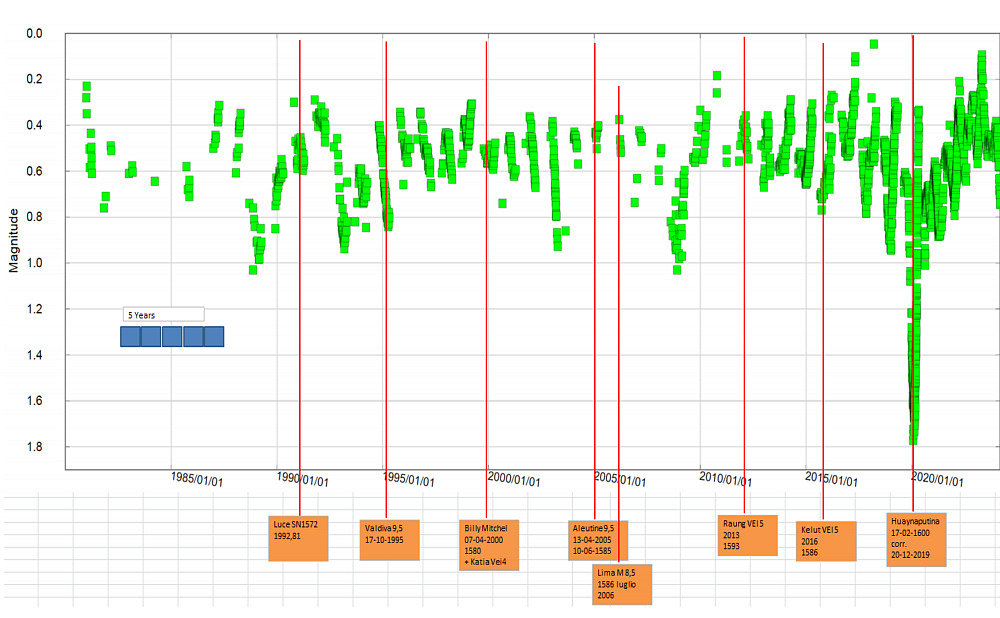
E – Attempt to match the luminosities of Betelgeuse to the events of 1572-1604. The data doesn’t match.
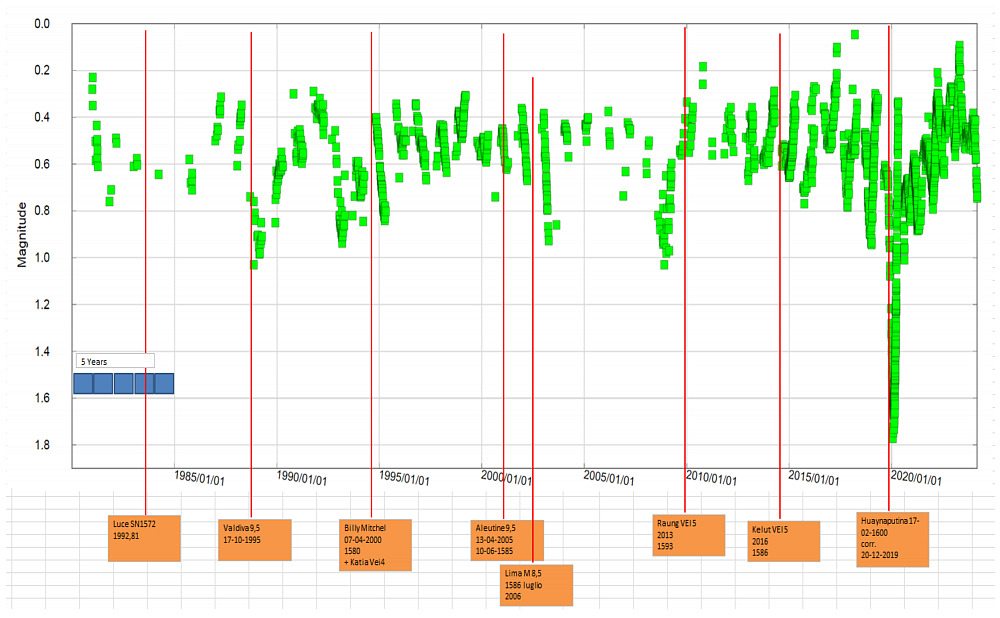
F – Attempt to match the luminosities of Betelgeuse to the events of 1572-1604. The data match because I calculated the slowdown of cosmic rays caused by the intergalactic clouds in Orion.
Won’t Betelgeuse explode?
Initially I thought it would explode and I had cross-referenced the 2019 decline with several volcanoes that had erupted previously at Huaynaputina, but the timelines didn't match at all. It should have exploded 11 years later, in around 2031, but the data said otherwise. I also miscalculated several times and got lost.
However there is not much chance that the 2019 event corresponds to the volcanoes/earthquakes of 11 years earlier simply because 11 years before the Huaynaputina eruption nothing appears. If anyone can find historical data from that time please let me know.
After 7 years of studying and hoping to see what you hoped for come true, it's quite hard to bear. However, someone still helped me and it was certainly not by chance that I landed on another star. I invite you to read the next page, the one on the star Antares.


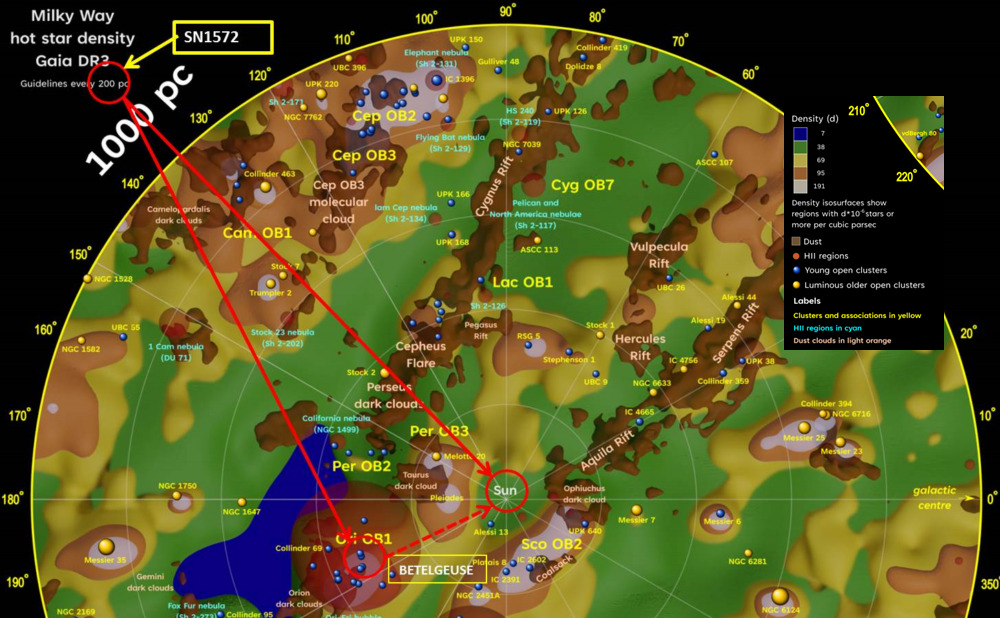
Leave a Reply